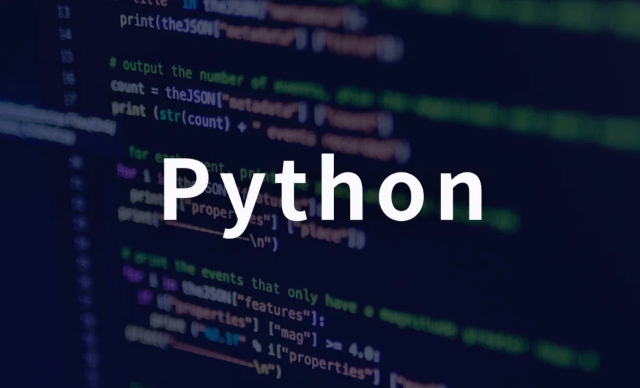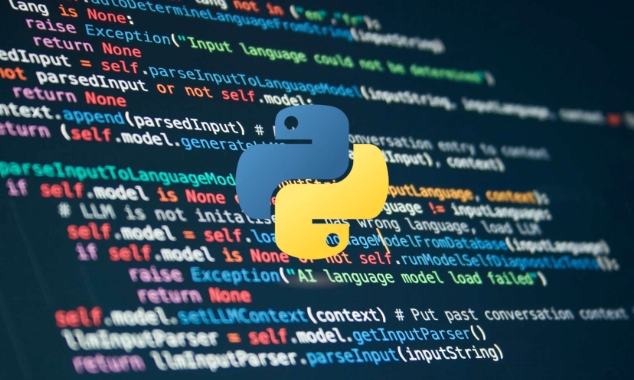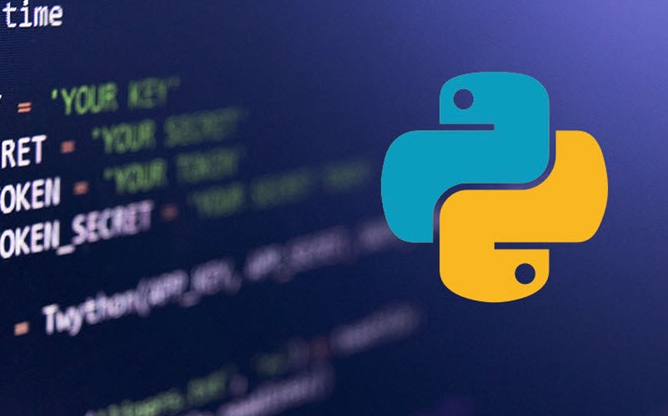Developing Secure Authentication Systems in Python Django
Jul 22, 2025 am 01:58 AMWhen developing a secure authentication system in Python Django projects, you should give priority to using the built-in authentication system and extend it reasonably. 1. Use the Django default user model or inheritance AbstractUser for expansion to avoid duplicate wheels; 2. Strengthen password policies and introduce third-party libraries to set complexity, anti-reuse and expiration mechanisms; 3. Protect login and sensitive operations, enable the number of failures, secondary confirmation and session protection; 4. Prevent common attacks such as CSRF, XSS, and session hijacking, configure secure cookie options and unify login error prompts. Through the above measures, a safe and stable certification system can be built.

Developing a secure authentication system in Python Django projects is the core of understanding the default mechanism, strengthening password policies, protecting sensitive operations, and preventing common attacks. The authentication system that comes with Django is already quite secure, but it still needs to be expanded and reinforced according to business needs when deploying.

Use Django's built-in authentication system and extend it reasonably
Django provides an out-of-the-box authentication system ( django.contrib.auth ), including user model, login, logout, permission control and other functions. It is the most direct and safest way to use it.
suggestion:

- Do not remake the wheel. Unless there are special needs (such as login with your mobile phone number), try to use the default user model.
- If you need to extend user information, use
OneToOneFieldto associate theUsermodel or inheritAbstractUser. - Enable
is_active,is_staff,is_superuserfields to control user permissions and avoid manually managing permission logic.
For example, a custom user model can be defined like this:
from django.contrib.auth.models import AbstractUser
class CustomUser(AbstractUser):
phone_number = models.CharField(max_length=15, blank=True)Strengthen password strategy
The default Django password verification mechanism is relatively loose, only requiring length ≥8 and impure numbers. To enhance security, it is recommended to use third-party libraries such as django-passwords or django-zxcvbn-passwords to implement stronger password policies.

suggestion:
- Set password complexity requirements (case numeric symbols)
- Prevent users from reusing old passwords
- Set password expiration policy (applicable to enterprise systems)
For example, configure in settings.py :
AUTH_PASSWORD_VALIDATORS = [
{
'NAME': 'django.contrib.auth.password_validation.NumericPasswordValidator',
},
{
'NAME': 'passwords.validator.MinLengthValidator',
'OPTIONS': {
'min_length': 12,
}
},
]Protect logins and sensitive operations
The login interface is the most common place for attackers to try to break through. In addition to using HTTPS transmission, attacks such as brute force cracking, CSRF, and session fixation are also needed to be prevented.
suggestion:
- Enable login failure limit (such as using
django-axes) - Protect views using Django's
login_requiredand@permission_requireddecorators - Add a secondary confirmation mechanism for sensitive operations (such as modifying passwords and deleting accounts)
- Use the
backendparameter to prevent session fixation when callinglogin()after login
For example, limit the number of login failures:
pip install django-axes
Then add middleware in settings.py :
MIDDLEWARE = [
...
'axes.middleware.AxesMiddleware',
]Prevent common attack methods
In addition to basic authentication logic, some common security vulnerabilities need to be paid attention to, such as:
- CSRF (cross-site request forgery): Django enables CSRF protection by default, but
@csrf_protectorcsrfmiddlewaremust be used in the custom view. - XSS (cross-site script): Avoid directly outputting user input content, using the automatic escape function in the template
- Session Hijacking: Set
SESSION_COOKIE_SECURE=TrueandSESSION_COOKIE_HTTPONLY=True - User enumeration: Do not prompt "user does not exist" or "password error" when login fails, and prompt "user name or password error" in a unified way
For example, set up a secure session configuration:
SESSION_COOKIE_SECURE = True SESSION_COOKIE_HTTPONLY = True CSRF_COOKIE_SECURE = True
Basically that's it. Developing a secure authentication system is not complicated, but details are easily overlooked. By rationally using Django's existing security mechanism and expanding it in combination with business needs, a relatively stable certification system can be built.
The above is the detailed content of Developing Secure Authentication Systems in Python Django. For more information, please follow other related articles on the PHP Chinese website!

Hot AI Tools

Undress AI Tool
Undress images for free

Undresser.AI Undress
AI-powered app for creating realistic nude photos

AI Clothes Remover
Online AI tool for removing clothes from photos.

Clothoff.io
AI clothes remover

Video Face Swap
Swap faces in any video effortlessly with our completely free AI face swap tool!

Hot Article

Hot Tools

Notepad++7.3.1
Easy-to-use and free code editor

SublimeText3 Chinese version
Chinese version, very easy to use

Zend Studio 13.0.1
Powerful PHP integrated development environment

Dreamweaver CS6
Visual web development tools

SublimeText3 Mac version
God-level code editing software (SublimeText3)

Hot Topics
 Polymorphism in python classes
Jul 05, 2025 am 02:58 AM
Polymorphism in python classes
Jul 05, 2025 am 02:58 AM
Polymorphism is a core concept in Python object-oriented programming, referring to "one interface, multiple implementations", allowing for unified processing of different types of objects. 1. Polymorphism is implemented through method rewriting. Subclasses can redefine parent class methods. For example, the spoke() method of Animal class has different implementations in Dog and Cat subclasses. 2. The practical uses of polymorphism include simplifying the code structure and enhancing scalability, such as calling the draw() method uniformly in the graphical drawing program, or handling the common behavior of different characters in game development. 3. Python implementation polymorphism needs to satisfy: the parent class defines a method, and the child class overrides the method, but does not require inheritance of the same parent class. As long as the object implements the same method, this is called the "duck type". 4. Things to note include the maintenance
 Python Function Arguments and Parameters
Jul 04, 2025 am 03:26 AM
Python Function Arguments and Parameters
Jul 04, 2025 am 03:26 AM
Parameters are placeholders when defining a function, while arguments are specific values ??passed in when calling. 1. Position parameters need to be passed in order, and incorrect order will lead to errors in the result; 2. Keyword parameters are specified by parameter names, which can change the order and improve readability; 3. Default parameter values ??are assigned when defined to avoid duplicate code, but variable objects should be avoided as default values; 4. args and *kwargs can handle uncertain number of parameters and are suitable for general interfaces or decorators, but should be used with caution to maintain readability.
 Explain Python generators and iterators.
Jul 05, 2025 am 02:55 AM
Explain Python generators and iterators.
Jul 05, 2025 am 02:55 AM
Iterators are objects that implement __iter__() and __next__() methods. The generator is a simplified version of iterators, which automatically implement these methods through the yield keyword. 1. The iterator returns an element every time he calls next() and throws a StopIteration exception when there are no more elements. 2. The generator uses function definition to generate data on demand, saving memory and supporting infinite sequences. 3. Use iterators when processing existing sets, use a generator when dynamically generating big data or lazy evaluation, such as loading line by line when reading large files. Note: Iterable objects such as lists are not iterators. They need to be recreated after the iterator reaches its end, and the generator can only traverse it once.
 Python `@classmethod` decorator explained
Jul 04, 2025 am 03:26 AM
Python `@classmethod` decorator explained
Jul 04, 2025 am 03:26 AM
A class method is a method defined in Python through the @classmethod decorator. Its first parameter is the class itself (cls), which is used to access or modify the class state. It can be called through a class or instance, which affects the entire class rather than a specific instance; for example, in the Person class, the show_count() method counts the number of objects created; when defining a class method, you need to use the @classmethod decorator and name the first parameter cls, such as the change_var(new_value) method to modify class variables; the class method is different from the instance method (self parameter) and static method (no automatic parameters), and is suitable for factory methods, alternative constructors, and management of class variables. Common uses include:
 How to handle API authentication in Python
Jul 13, 2025 am 02:22 AM
How to handle API authentication in Python
Jul 13, 2025 am 02:22 AM
The key to dealing with API authentication is to understand and use the authentication method correctly. 1. APIKey is the simplest authentication method, usually placed in the request header or URL parameters; 2. BasicAuth uses username and password for Base64 encoding transmission, which is suitable for internal systems; 3. OAuth2 needs to obtain the token first through client_id and client_secret, and then bring the BearerToken in the request header; 4. In order to deal with the token expiration, the token management class can be encapsulated and automatically refreshed the token; in short, selecting the appropriate method according to the document and safely storing the key information is the key.
 What are Python magic methods or dunder methods?
Jul 04, 2025 am 03:20 AM
What are Python magic methods or dunder methods?
Jul 04, 2025 am 03:20 AM
Python's magicmethods (or dunder methods) are special methods used to define the behavior of objects, which start and end with a double underscore. 1. They enable objects to respond to built-in operations, such as addition, comparison, string representation, etc.; 2. Common use cases include object initialization and representation (__init__, __repr__, __str__), arithmetic operations (__add__, __sub__, __mul__) and comparison operations (__eq__, ___lt__); 3. When using it, make sure that their behavior meets expectations. For example, __repr__ should return expressions of refactorable objects, and arithmetic methods should return new instances; 4. Overuse or confusing things should be avoided.
 How does Python memory management work?
Jul 04, 2025 am 03:26 AM
How does Python memory management work?
Jul 04, 2025 am 03:26 AM
Pythonmanagesmemoryautomaticallyusingreferencecountingandagarbagecollector.Referencecountingtrackshowmanyvariablesrefertoanobject,andwhenthecountreacheszero,thememoryisfreed.However,itcannothandlecircularreferences,wheretwoobjectsrefertoeachotherbuta
 Describe Python garbage collection in Python.
Jul 03, 2025 am 02:07 AM
Describe Python garbage collection in Python.
Jul 03, 2025 am 02:07 AM
Python's garbage collection mechanism automatically manages memory through reference counting and periodic garbage collection. Its core method is reference counting, which immediately releases memory when the number of references of an object is zero; but it cannot handle circular references, so a garbage collection module (gc) is introduced to detect and clean the loop. Garbage collection is usually triggered when the reference count decreases during program operation, the allocation and release difference exceeds the threshold, or when gc.collect() is called manually. Users can turn off automatic recycling through gc.disable(), manually execute gc.collect(), and adjust thresholds to achieve control through gc.set_threshold(). Not all objects participate in loop recycling. If objects that do not contain references are processed by reference counting, it is built-in






